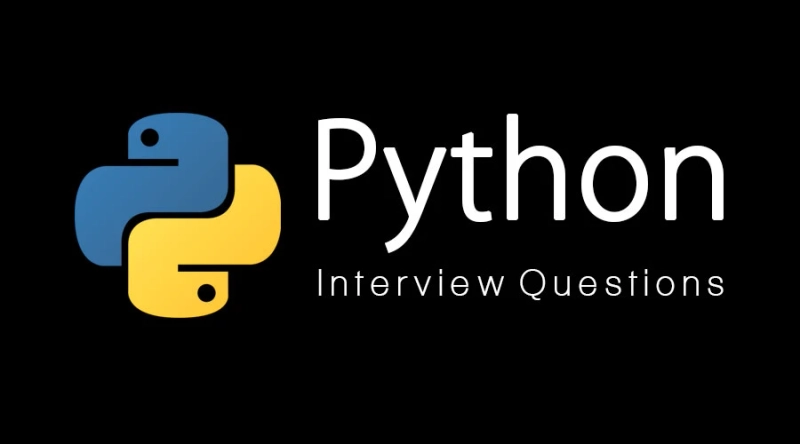Python is among the most popular programming languages today. Major organizations in the world build programs and applications using this object-oriented language. Here, you will come across some of the most frequently asked questions in Python job interviews in various fields. Our python interview questions and answers for freshers and experienced will help you in your interview preparation. Let us take a look at some of the most popular and significant Python programming interview questions and answers:
Question: Explain Python?
Answer: Python is a highly comprehensive, interactive, and object-oriented scriptwriting language. It is specifically developed with the purpose of making the content highly readable among net surfers. Python makes use of various English keywords other than just punctuations. It also has lesser syntactical constructions like in other languages.
Question: What are the distinct features of Python?
Answer: The distinct features of Python include the following.
Structured and functional programs are supported. It can be compiled to byte code for creating larger applications. Develops high-level dynamic data types. Supports checking of dynamic data types. Applies automated garbage collection. It could be used effectively along with Java, COBRA, C, C++, ActiveX, and COM.
Question: What is Pythonpath?
Answer: A Pythonpath tells the Python interpreter to locate the module files that can be imported into the program. It includes the Python source library directory and source code directory.
Question: Can we preset Pythonpath?
Answer: Yes, we can preset Pythonpath as a Python installer.
Question: Why do we use Pythonstartup environment variable?
Answer: We use the Pythonstartup environment variable because it consists of the path in which the initialization file carrying Python source code can be executed to start the interpreter.
Question: What is the Pythoncaseok environment variable?
Answer: Pythoncaseok environment variable is applied in Windows to direct Python to find the first case-insensitive match in an import statement.
Question: What are the supported standard data types in Python?
Answer: The supported standard data types in Python include the following.
List. Number. String. Dictionary. Tuples.
Question: Define tuples in Python?
Answer: Tuples is a sequence data type in Python. The number of values in tuples is separated by commas.
Question: What are the positive and negative indices?
Answer: In the positive indices are applied the search beings from left to the right. In the case of the negative indices, the search begins from right to left. For example, in the array list of size n the positive index, the first index is 0, then comes 1, and until the last index is n-1. However, in the negative index, the first index is -n, then -(n-1) until the last index will be -1.
Question: What are the benefits of using Python?
Python has various benefits, and some of them are:
Easy to read and write Interpreted language Vast library functions Portable across various operating systems Efficiency Presence of third-party modules Various data analysis tools. Object-oriented programming base Open-source library Rich frameworks
Question: How to write a program in Python?
Before writing a program in Python, there should be an interpreter like PyCharm installed on the system.
step1: Create a new project
step2 : Select a location or storage space where files will be stored
step3 : Click on the create button and select the new file
step4 : Name the file
step5 : Type a simple program
step6 : Run the program from the run option in the Menu
step7 :The output will be at the bottom of the screen
Question: Where to run Python code?
You can run a Python code from the run option in the menu in an interpreter. A Python code can also run in command prompt code. It will run the program after entering the correct path of the file.
Question: What is a function in Python for example?
A function in Python is a code block that runs when it is called in a program. Data can be passed into the function with the help of this, and it is known as a parameter. The function can also return data as results.
Question: How many functions are there in Python?
There are basically three types of functions in Python:
– Built-in functions
These functions come defined with the Python language. Here are some of the built-in functions in Python:
print() function len() function sum() function sorted() function dir() function max() function– User-defined functions
These functions are defined by the user to perform a task in the program. These are defined with the def keyword at the start. These functions are written like this:
def add_numbers() def entry()– Anonymous functions
These are the functions that are defined without a name. Also called lambda functions, anonymous functions are used when a user needs a function for a little time in function. It is written as— lambda().
For more python questions for interview.
0


